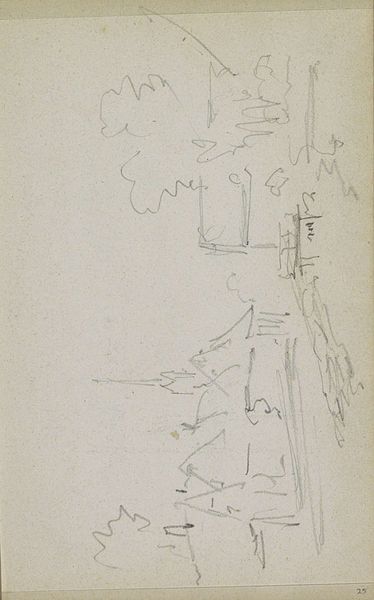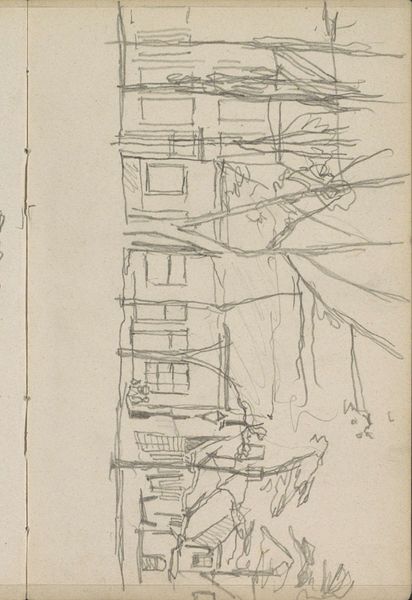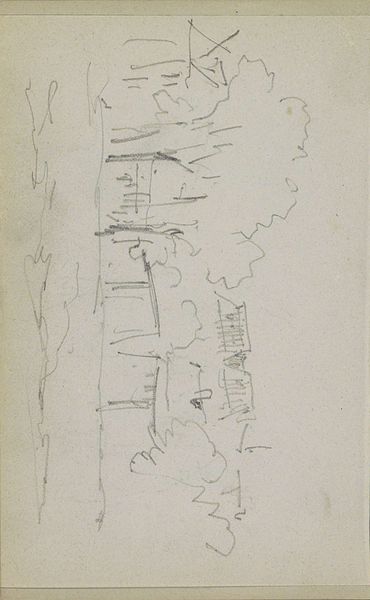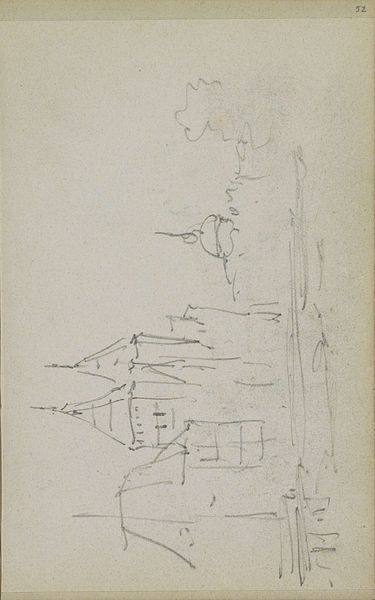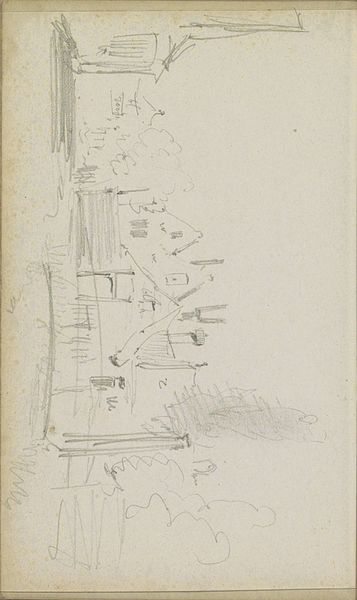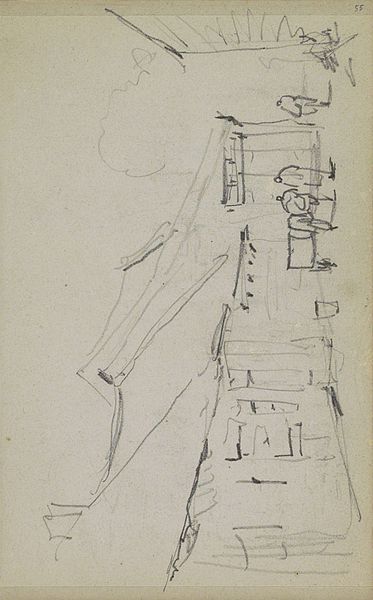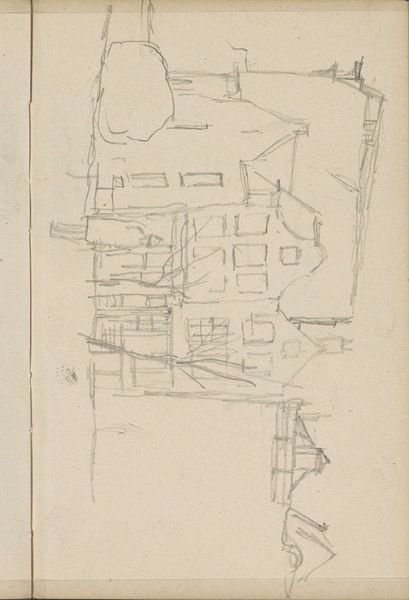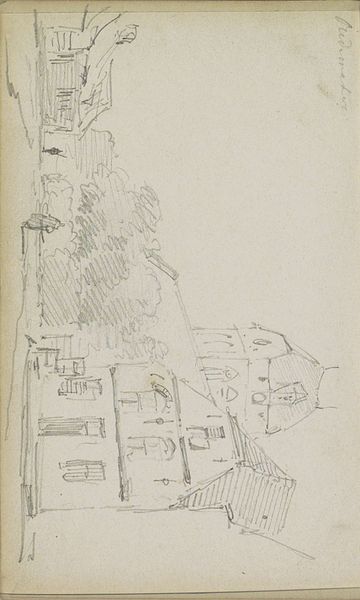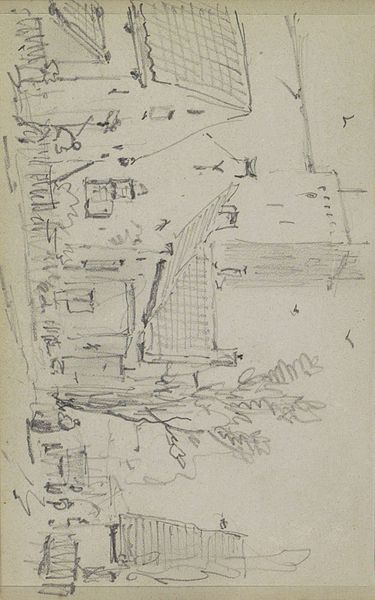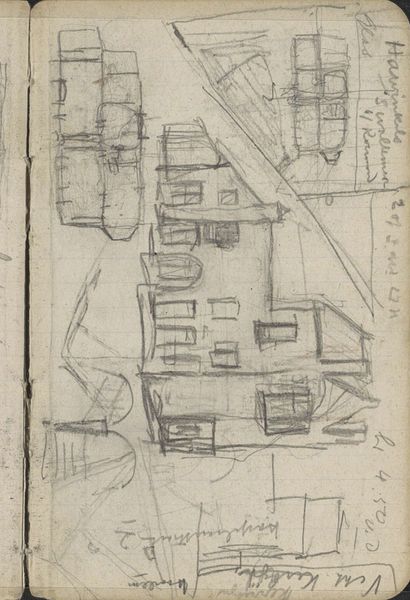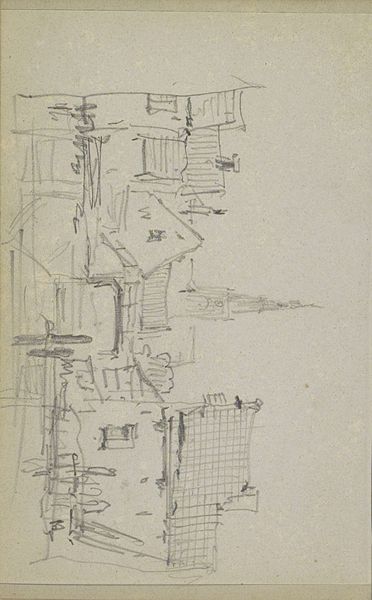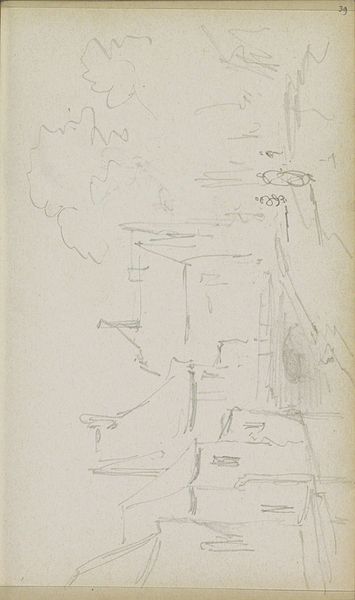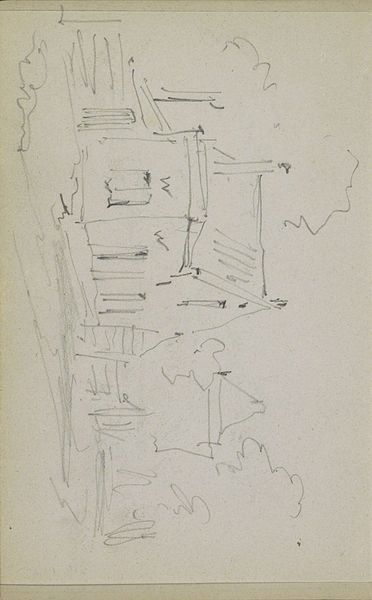
drawing, paper, pencil
#
drawing
#
landscape
#
paper
#
pencil
#
street
#
realism
Copyright: Rijks Museum: Open Domain
Curator: This delicate pencil drawing captures a slice of Dutch life, believed to be a street view, possibly in Oudewater, by Adrianus Eversen, created sometime between 1828 and 1897. What stands out to you? Editor: Immediately, there's a stillness to it, even with the suggestion of buildings and a figure. The sketch-like quality lends an air of incompleteness. Curator: Precisely. Eversen, though known for his more polished cityscapes, here gives us something rawer. The tentative lines almost vibrate with the possibility of what *could* be there. This reflects a broader cultural memory of Dutch Golden Age painting, even in the rapidly industrializing 19th century, but approached with less confidence. Editor: The incompleteness also emphasizes a class disparity. Only portions of the buildings are detailed while the landscape isn't, hinting at where time and effort were valued. Who lived and worked where and how would this resonate in contemporary social theory, particularly about urban environments? Curator: Indeed, we're drawn to fill in those blanks. Perhaps that's a symbolic reminder of the viewer's own role in constructing the image, imbuing it with personal meaning. In terms of composition, the sketch directs the eye upward, despite a low horizon line, but why? Editor: I think the towering effect reinforces concepts of power. Even if the houses aren't fully sketched in, we understand their scale and implication. And what about that figure at the bottom, are they erased or emerging? How can we situate the artwork within broader intersectional narratives? Curator: The beauty is in this ambiguity. Perhaps they are just entering, or simply passing by, or soon they may no longer be there! Thank you for guiding our exploration. Editor: It reminds us how context profoundly shapes perception, challenging what seems evident.
Comments
No comments
Be the first to comment and join the conversation on the ultimate creative platform.
